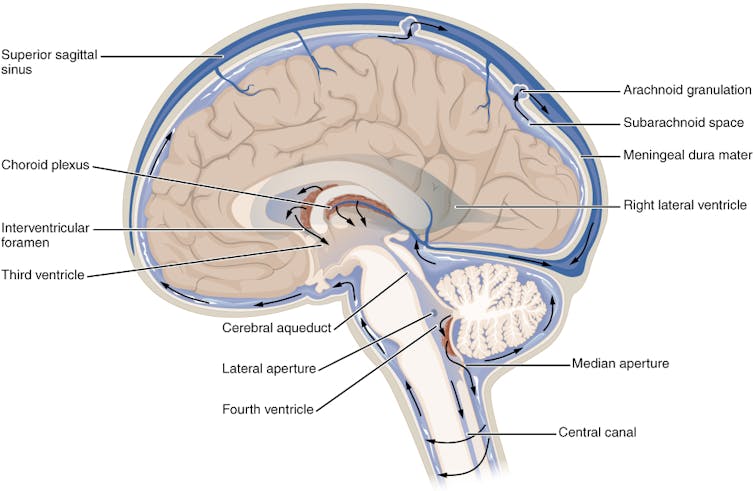The clear, colorless fluid known as cerebrospinal fluid (CSF) plays an essential role in maintaining the health and proper functioning of your central nervous system. It acts as a cushion for the brain and spinal cord, delivers vital nutrients, and helps remove metabolic waste products.
Despite its critical importance, issues related to CSF often go unnoticed until they cause significant health problems. These conditions can be subtle initially, making early diagnosis challenging.
Recently, cerebrospinal fluid abnormalities have gained increased public attention, especially after reports revealed that renowned musician Billy Joel was diagnosed with normal pressure hydrocephalus. This condition involves an abnormal buildup of CSF within the brain’s ventricles, leading to their enlargement and exerting pressure on adjacent brain tissue, even when diagnostic scans show normal pressure readings. Because this form of hydrocephalus develops gradually and can resemble symptoms of neurodegenerative diseases like Alzheimer’s or Parkinson’s, it is frequently misdiagnosed.
As a neurologist specializing in headache disorders, I have encountered numerous cases where CSF-related conditions present in diverse ways. Here’s an overview of what happens when the delicate balance of cerebrospinal fluid is disrupted.
Understanding Cerebrospinal Fluid
CSF is composed mainly of water, along with proteins, glucose, ions, and neurotransmitters. It is primarily produced by a specialized network of cells called the choroid plexus, located within the brain’s ventricles.
On average, the choroid plexus generates about 500 milliliters (roughly 17 ounces) of CSF daily. However, at any given moment, only around 150 milliliters (approximately 5 ounces) circulate within the central nervous system, thanks to continuous absorption and renewal. This fluid flows through the brain’s ventricles, the central canal of the spinal cord, and the subarachnoid space surrounding both the brain and spinal cord.

OpenStax, CC BY-SA
CSF serves multiple vital functions. It acts as a shock absorber, protecting the brain and spinal cord from injury. By suspending the brain within this fluid, it reduces the effective weight of the brain, preventing it from compressing under its own mass. Additionally, CSF helps maintain a stable chemical environment, facilitating the removal of metabolic waste and the distribution of nutrients and hormones essential for neural function.
Disruptions in the production, flow, or absorption of CSF can lead to serious neurological conditions. Two notable examples are CSF leaks and idiopathic intracranial hypertension.
CSF Leaks: When Fluid Escapes
A cerebrospinal fluid leak occurs when CSF escapes through a tear or hole in the dura mater-the tough outer membrane surrounding the brain and spinal cord. This breach can result from head trauma, surgical procedures involving the sinuses, brain, or spine (such as lumbar punctures, epidurals, or myelograms), or sometimes occur spontaneously without an identifiable cause.
Historically, CSF leaks were considered rare, with an estimated incidence of about 5 cases per 100,000 people annually. However, with advances in imaging technology and increased clinical awareness, more cases are being diagnosed. They tend to be more common among middle-aged adults and are observed more frequently in women than men. Underlying connective tissue disorders like Ehlers-Danlos syndrome and conditions such as postural orthostatic tachycardia syndrome (POTS) are also associated with higher risk.
Diagnosing a CSF leak can be challenging because its symptoms often mimic other conditions like migraines, sinus infections, or allergies. The hallmark symptom is a positional headache that worsens when standing and improves when lying down. Patients may also experience ringing in the ears, visual disturbances, memory issues, brain fog, dizziness, and nausea.
Imaging studies such as MRI scans of the brain or spine, or a myelogram, can help identify leaks by revealing brain sagging or fluid collections outside the dura. However, approximately 19% of patients with CSF leaks may have normal imaging results, complicating diagnosis.
Initial treatment typically involves conservative measures: bed rest, hydration, and caffeine intake, which can stimulate CSF production and help seal the leak. Increasing caffeine consumption to the equivalent of three to four cups of coffee daily may provide relief by activating adenosine receptors involved in pain modulation and CSF regulation.
If conservative approaches fail, an epidural blood patch-where a patient’s blood is injected into the epidural space-can be effective. The blood forms a clot that seals the leak and promotes healing. In persistent or complex cases, surgical repair may be necessary. Most patients respond well to these treatments, leading to symptom resolution.
Elevated Intracranial Pressure: The Case of Idiopathic Intracranial Hypertension
Idiopathic intracranial hypertension (IIH) is characterized by an increase in CSF pressure within the skull, which compresses the brain and can cause significant symptoms. The term “idiopathic” indicates that the exact cause remains unknown, although certain risk factors are well recognized.
Obesity is a major risk factor, with the prevalence of IIH rising in tandem with the obesity epidemic. Other contributing factors include certain medications such as tetracyclines, vitamin A derivatives, steroids, and hormonal therapies. Women of childbearing age, especially those with recent weight gain, are disproportionately affected-studies suggest they are up to 20 times more likely to develop IIH compared to other groups.
Common symptoms include headaches, visual disturbances, ringing in the ears (tinnitus), and swelling of the optic disc (papilledema). The latter is a key diagnostic feature observed during eye examinations and indicates increased intracranial pressure. Patients may also experience weakness or paralysis of eye muscles, leading to double vision.
Normal pressure hydrocephalus, as seen in Billy Joel’s case, is a subtype of this condition that often presents with gait disturbances, urinary incontinence, and cognitive decline-collectively known as the “wet, wobbly, and wacky” triad. Recognizing this pattern has increased awareness of this treatable disorder, which is often managed surgically by implanting a shunt to divert excess CSF and relieve pressure.
Diagnosis involves brain imaging to exclude other causes such as tumors or blood clots, along with lumbar puncture to measure CSF pressure and analyze its composition. Since elevated intracranial pressure can cause irreversible optic nerve damage and permanent vision loss, prompt treatment is crucial. Approaches include weight management, dietary modifications, medications to reduce CSF production, and surgical interventions when necessary.
Emerging Questions and Future Research
While CSF is vital for maintaining brain health, many aspects of its regulation and related disorders remain poorly understood. The precise mechanisms leading to conditions like CSF leaks and idiopathic intracranial hypertension are still under investigation. Ongoing research aims to improve diagnostic accuracy and develop more effective, targeted therapies for these complex disorders.
Understanding the intricacies of CSF dynamics is essential for advancing neurological care and improving patient outcomes. As science progresses, new insights will hopefully lead to better prevention, diagnosis, and treatment options for CSF-related conditions.
This article is an updated version of a piece originally published on August 14, 2024.

